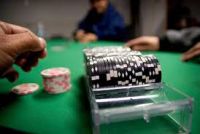Yesterday Alternative Energy Africa looked at figures from 2007’s top 10 African economies in our special Investor Watch piece. However, 2007 was three years ago – what’s going on in
First of all, a shift is beginning to occur that is propelling some unlikely candidates to be among the world’s top growing economies. The Economist said in its “The World in 2009” report that previously the fastest economic growth has been seen coming from countries that were producers of highly sought after commodities. The report said, “But with the 2008 reversal in commodities prices, the natural resources boom may be over.”
Many African economies have hit double digits in their growth rate, with five African countries making the top 10 global economic increase list – and
Granted these top five African economies are fueled by commodities:
Among the African countries that are on the rise for greatest economic growth, the renewable energy sector is seeing a significant increase which could help other countries to climb up the economic growth ladder. In 1990, RE held only 4.5% of the global energy share increasing to 5.9% in 2000 according to the European Commission. This year, RE is expected to contribute 8.2% to the world’s energy mix, 10% in 2020, and 11.8% in 2030.
With the European Commission’s predictions on the RE sector and the anticipated growth of
US-educated, former finance minister, and a former World Bank employee, Johnson-Sirleaf’s economic insight is driving
In a recent cabinet meeting, the President pushed for the country’s power and energy sector to be the main focus of discussion, including talks on the rehabilitation of the
The Rural and Renewable Energy Agency (RREA) has plans to promote rural electrification beginning with a pilot project at Yandohun using a micro-hydro electric plant. The Executive Director of RREA Augustus Goanue announced that a rural energy fund is being set up. "Lighting One Million Lives in
4G Global Alternatives, LLC (4GGA), specializing in infrastructure and power solutions that are both sustainable and renewable, built a 22.5-MW power plant for the country. "There has been a renewed interest in the country of
These examples combined with Johnson-Sirleaf’s financier background could indicate a strong investor outlook and generate confidence. The president has ties to the World Bank, which could expedite certain partnerships or at least offer the expertise needed to obtain the World Bank’s support for new projects within the country.
Buchanon Renewables President Joel Strickland told Alternative Energy Africa, “We see great potential for
We couldn’t agree more.
Continue to follow Alternative Energy Africa’s Investor Watch next week as more African countries that investors should keep an eye on will be featured.
SPECIAL: AEA’s Investor Watch Sunday, August 1, 2010
Get the LATEST issue of Alternative Energy Africa featuring biofuels in the aviation industry, the

